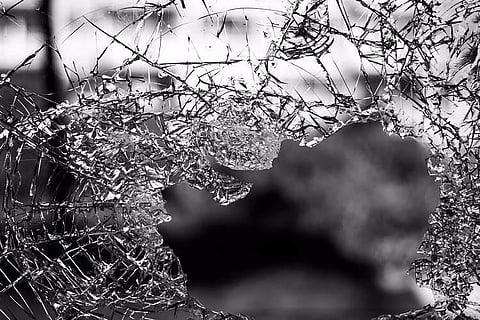

It has been two years since the government of Karnataka passed the Good Samaritan Law, but a recent study has revealed that not many are aware of it and still hesitate from helping out accident victims. The Karnataka Good Samaritan law was brought in to encourage bystanders to help road accident victims. The objective of the legislation is to legally protect ordinary citizens so that they offer assistance to accident victims without fear and hesitation.
In medical terms, the ‘golden hour’ is the first hour following the infliction of an injury, during which medical attention is crucial. In most cases, when confronted with a road accident, people refrain from rushing victims to the hospital due to the fear of being questioned by the police during the investigation. Sometimes, people are also asked to pay the medical bills for admitting an accident casualty. Such repercussions deter witnesses from offering help during accidents. To prevent such occurrences in the future, the Good Samaritan law was enacted in Karnataka in the year 2016.
In 2012, a writ petition was filed by an NGO, Save Life Foundation to protect Good Samaritans who help accident victims. Following this, the Supreme Court passed ‘force of law’ to the guidelines and standard operating procedures issued by the Centre for protection of Good Samaritans from police harassment. And in 2016, a bill was drafted ordering the state to frame the guidelines accordingly. In this regard, the legislation drafted by Karnataka two years back was recently approved by President Ramnath Kovind.
What the law states
The Karnataka Good Samaritan and Medical Professional (Protection and Regulation during Emergency Situations) Bill of 2016, received the President’s assent in October 2018 to become an Act.
According to the law, a Good Samaritan is allowed to leave the hospital after ensuring that the victim is in the hands of a doctor and hospital staff. Under the legal protection given to those who provide emergency help accidents victims, the police and hospital are instructed not to trouble them unnecessarily enquiry.
In addition to this, a Good Samaritan Fund will be created to bear the expenses incurred during mandatory court and police station attendance. Also, all hospitals and police stations need to have the Good Samaritan Charter published at their entrance to educate citizens.
Another important feature of the law is that a person who makes a call to the police control room to report an accident should not be forced to disclose their identity and address. A Samaritan’s personal details need not be revealed to the hospital either.
‘Need of the hour’
According to a nationwide survey conducted by the SaveLife Foundation, 50% of road accident deaths could have been prevented if immediate aid and medical attention was given.
Another survey revealed that 88% of bystanders refused to lend assistance to accident victims because of the fear of getting involved with authorities. Even the World Health Organization stated that 50% of victims die within the first 15 minutes of an accident because of cardiovascular injuries. However, the remaining 50% can be saved if immediate life support is given during the ‘golden hour’.
According to statistics from the Bengaluru Traffic Police, up till October 2018, 3,803 accident cases and 563 deaths have been recorded. Also, in 2015 and 2016, Karnataka was one of the top five states with the largest number of people getting killed in road accidents. In such a distressing backdrop, the Good Samaritan law was an urgent requirement and is seen as a ray of hope for bringing down the fatalities caused by road accidents.
Lack of awareness
A recent multi-city survey conducted by SaveLIFE Foundation on bystander care in India revealed some staggering results. The survey interviewed a total of 3,667 people including general citizens, good Samaritans, police officials, hospital administrators, medical practitioners and trial court lawyers. Only 29% said that they were willing to escort victims to the hospital, only 28% said they are willing to call an ambulance and a bare minimum of 12% agreed to call the police.
62% of respondents said that they were hesitant to offer help. Among which, 33% respondents attributed their hesitation to fear of police harassment and 28% attributed it to legal hassles and court appearances. And only at appalling 16% were aware of the Good Samaritan Law. This implies that over 8 out of 10 people in India are still unaware about the existence of their new rights as Good Samaritans
Unfortunately, none of the hospitals surveyed had a Good Samaritan Charter published.
South capitals had the least awareness regarding the law, the survey states: 92% respondents in Bengaluru, 93% in Chennai and 89% in Hyderabad were unaware of the law. 43% of the Good Samaritans confirmed that they were asked to provide their personal details at hospitals and 59% said that they were detained by the police. The only good news was that the general willingness of the public to help victims has risen from 26% in 2013 to 88% in 2018.
Though the Good Samaritan Law is a positive step, efforts need to be taken to create awareness among citizens over this subject. The law should be efficiently communicated so that people know that they have the right to protect themselves during the investigation. This will not only encourage them but will also make them confident to take action when encountered with an accident.
Dangers of the ‘Bystander Effect’
In addition to the fear of getting involved in the investigation, the ‘bystander effect’ is also a chief reason behind the general public apathy towards another person’s helpless plight. According to the Bystander Effect phenomenon, a person abstains from stepping in to help a person in need when there are many observers, assuming that someone else will do so. The larger the number of witnesses present, the less likely are they to assist a person in distress.